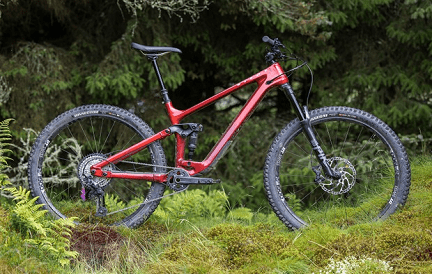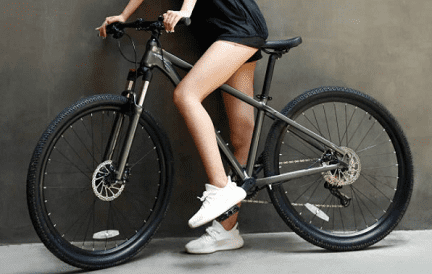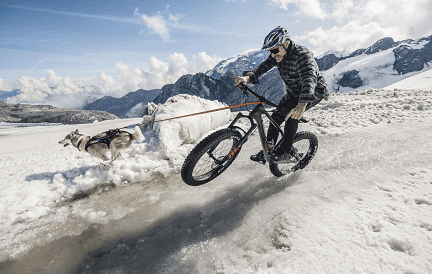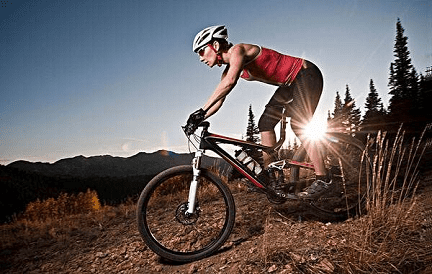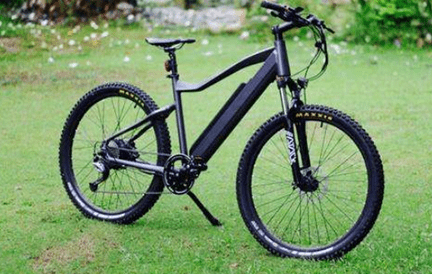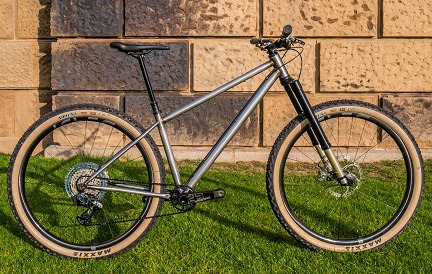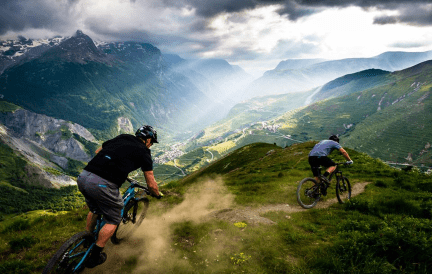Knowing the types will help you with the choice of bike that is suitable for your needs. Whether it is a hardtail mountain bike or a full-suspension one. We will provide you with the information you need to help you choose the best bike to meet your preferences.
- Part 1: Beginning: Product Overview
- Part 2: Product Advantages
- Part 3: Product Classification and Introduction
- Part 4: Buying Guide
Part 1: Beginning: Product Overview
Biking has been everybody’s favorite pastime activity nowadays. Having bike riding as a hobby requires you to have more understanding about the types and parts of a bike. When you enjoy riding around the city streets the best option for you is a city bike. For you who often join a competition or event, a road bike is for you. But you can also ride this bike to enjoy biking in the park, going to the office, or even biking in the mountains. Wandering around the mountain trails, even the extreme ones, is better for you to have a mountain bike. Even though the name is a mountain bike, the use of it is not solely for biking in the mountains.

You can use it for tracking or for exercising, either on flat or bumpy roads. But, if mountain biking is really your calling, then a mountain bike is the option. There are two kinds of mountain bikes: hardtail and full-suspension. A hardtail bike is when the bike only has one fork suspension which is located at the front while there is nothing in the rear. On the other hand, a full-suspension mtb has suspension either on the front or at the back. This makes it more flexible when running on bumpy roads.
If you are willing to spend a little more and want to ride technical trails, go with a full-suspension bike. The full-suspension mountain bike is a much safer path to progression for riders who are healthier, want to improve their skills and explore more difficult trails. Not only that, if you enjoy technical climbing or climbing on slick terrain, the full suspension is the way to go. But, choose a hardtail if you’re only climbing fire roads and a smooth single track since a single suspension will be enough.
Part 2: Product Advantages
Hardtail bike is the most common mtb to be found. Bike hardtail is ideal for beginners who want to spend more time cycling and less time maintaining and repairing their bikes. This type of bike is also less expensive because it lacks a rear shock and pivots. If this is your first time purchasing a mountain bike, a hardtail bike is a good place to start. In this type of bike, the frame of the bike is made solid without suspension. It is done by not adding any suspension in the frame, so the suspension is only the fork suspension on the front. Hardtail bicycles are a type of mountain bike that can be used to ride in various terrains and environments. Because of their adaptability and flexibility, they will perform well in most riding environments. Hardtails are a little harsh that adds to the feeling of speed.
Mountain trails, exciting roads, and challenging tracks are good places to go hardtail mountain biking. Hardtails are ideal for having fun, jumping, riding street trials, or simply enjoying the same tracks as before. When your ride consists of road or smoother trails with a lot of pedaling, the hardtail is more efficient due to its lower weight and rigid rear end. You can also ride a hardtail bike downhill. Even though you will feel every bump your back tire hits, you’ll be able to do it. Compared to a full-suspension mountain bike, a hardtail mountain bike is good for jumps. The drop on a hardtail, however, will be less comfortable due to the lack of a rear suspension. If you are on a budget and want to spend the majority of your time on smoother tracks, a hardtail bicycle can be your option.
Part 3: Product Classification and Introduction
Mountain biking is good for exercising. Compared to road bikes, mountain bikes are a better choice for exercising. While road bikes provide a better cardio and total-body workout, mountain bikes are ideal for increasing stamina and muscle mass. Whether it is a hardtail or a full-suspension one, mountain biking is a good way for exercising while enjoying the scenery. A mountain bike without suspension does a great job at handling some basic trails at your local park; however, if you want to tackle a steep and bumpy trail, a bike with partial or full suspension is recommended. Hardtail mountain bikes are a type of mountain bike that can be used on a variety of contours and environments. Because of their adaptability and durability, they can be used in a variety of riding situations: mountain trails, difficult roads, and exciting tracks. There are some types of hardtails as mentioned below:
XC Hardtails
Mountain biking’s origins are in cross-country, or XC, riding. This training includes rolling single-track, varying terrains, and long-distance trails. As a result, an XC bike is made to complement both endurance and speed. A hardtail directs all of the rider’s pedaling power to the rear wheel. This means XC biking prioritizes endurance over technical ability. XC bikes frequently feature a wide gear range, narrow tyres and bars, 75-100mm front suspension, and a steep head tube angle. This is because a stretched riding position is required for long periods of time in the saddle. Also to build a machine that can go downhill, but is primarily designed to keep you moving quickly up hills and around trails.
Trail Hardtails
Trail hardtails have a slacker and lower geometry than cross country hardtails. Trail hardtails have more relaxed angles, shorter stems, wider bars and gear ranges, and front travel ranging from 100 to 150mm. These bikes are manufactured to have enough suspension to efficiently descend while not being too bent, which would compromise climbing ability. Trail hardtails are an excellent choice if you’re not sure which type of cycling you want to pursue, and when you want a bike that can stylishly take you anywhere and everywhere. When compared to enduro, the weight of trail bikes is lighter and the geometry is shorter.
Enduro
Enduro is a kind of race where you are timed on your descents but not on the parts in between, like climbing and getting to and from different downhill sections. Enduro bikes have a long travel which is 150-200mm of travel, and are designed to go as fast as possible downhill on the most difficult trails. Their geometry is designed for speed on the downhills, as well as pedaling back uphill to begin the next race stage. Enduro bikes are heavier and have a steeper/shorter geometry than trail bikes. For fast downhill riding, enduro bikes have slack geometry and large suspension.
Electric Hardtails/eMTB
An electrically assisted hardtail MTB with geometries specifically designed for off-road riding is now available. Mountain bikes with electric assist, or e-MTBs, boost the power you exert while pedaling. It is made up for their added weight with a powerful pedal-assisted motor that provides a boost on the trail’s tougher climbs. With your new-found strength, you’ll be able to go further and faster, as well as explore trails that were previously inaccessible. The motor stops assisting when you stop pedaling. You still have to work for your enjoyment, but you get a better return on your time investment. The benefits of electric mountain bikes are obvious: you’ll be able to ride more, cover more ground, and do more descending in less time.
Part 4: Buying Guide
Based on the material, types and color, hardtail bikes may cost differently. Steel hardtail may have cheap prices compared to other bikes with different materials. It is because steel has more durability, it doesn’t break easily. It will bend first before breaking, so it is easier to be fixed. Even though there is a possibility that they can have a more expensive price. Aluminum hardtail bikes are a little bit more expensive since they are more corrosive resistant and durable. Carbon fiber hardtail bikes are denser and stronger than the others, that’s why the price is high. But, titanium may have the highest cost even more expensive than carbon frames. Titanium frames are very strong, they actually absorb the shocks. That is why they are more resistant to the impacts of tough riding.
In terms of price
As has been mentioned before, the price of hardtail bikes can be different according to the material, types and color of the bikes. The level of the rider also plays an important role. Whether he is a beginner or a professional cyclist. There is a pretty huge range in the price of hardtail mountain bikes. There are hardtails that cost around $450 for entry level (beginner) up to $7,000 bikes with good materials, for example like carbon fiber XC racing bikes. The price of aluminum hardtail starts from below $500 up to $5,000. A good steel hardtail bicycle costs from $800-$3,000. For titanium hardtail bikes the price is from $1,950 (frame only), and for a complete bike, starts from $4,950. So, to decide which bike to buy you need to put into consideration your needs and your level of riding skill. Don’t buy a bike that doesn’t meet your needs.
Frame Material
Various materials are used to make hardtail bikes, depending on their price point and intended use. First, the material used to make a hardtail bike’s frame is steel. Steel was used to make all bikes in the past because of its durability, strength, and riding comfort. However, due to its lower weight and stiffness-to-weight ratio when compared to other materials like carbon fiber and aluminum, it is becoming less popular. Second, aluminum. In today’s market, the most common material used to make bikes is aluminum. This kind of material is used for hardtail bikes because aluminum frames are lighter, more durable, and have better power transfer and stiffness to weight ratios compared to steel frames. Higher-end aluminum frames can have different thicknesses to reduce overall weight without sacrificing overall strength.
Third, the material used to make hardtail bike frames is carbon fiber. Carbon fiber is lightweight and the most durable material available for bicycle frames. Carbon, on the other hand, does not react to stresses in the same way that steel or aluminum do because it is not a metal. It’s made up of several different materials. The last is titanium. This material makes hardtail bicycles very pricey. Not only are titanium mountain bike frames more resistant to the impacts of hard riding, but they also absorb them. The reputation of titanium mountain bikes for their ride quality is well-deserved. Although titanium mountain bike frames are more expensive than carbon mountain bike frames, they are ideal for trail riding rather than road riding.
Wheel Size
The standard size of mountain bike wheels used to be 26 inch. From cross-country to downhill bikes used the same wheel size. But now, these 26-inch wheels (also called a 26er) are only used for jump bikes or junior bikes. In terms of performance, 26-inch tires provide excellent maneuverability for riding on narrow trails and ledges. They are also lighter and have less material, making them ideal for mtb. They are also lighter and have less material, making them ideal for hike-a-bike. The only issue is that they do not roll over rocks and harsh terrain like other larger wheels. This is because of the poor roll over ability.
Wheels size 27,5 inch and 29 inch can be other options. A 29er was developed because of the downside of 26er which is the inability to roll over larger obstacles. A 29er bike provides more speed, efficiency, and stability. In the mid 2000s 27.5 wheels entered the market. Bringing the best abilities of the two predecessors, which are steering precision with reasonable contact levels and ground rolling ability. A 27.5-inch bike provides a more responsive feel of the trail, providing greater rolling resistance but improved grip and overall top speed.
A hardtail bike is more likely to sustain a puncture than a full-suspension bike. This happens because the rear tyres absorb all of the shocks from the rear, putting additional strain on the tyre as it works to dampen, making the bumps wet on the road and eventually leading to punctures. It is critical that you have the proper tyre for the mountain tracks. Slicker tyres provide less resistance and are ideal for smoother trails and dry weather, whereas tyres with a higher profile are better suited for rough terrain and wet or slippery conditions. So, choose wisely!

